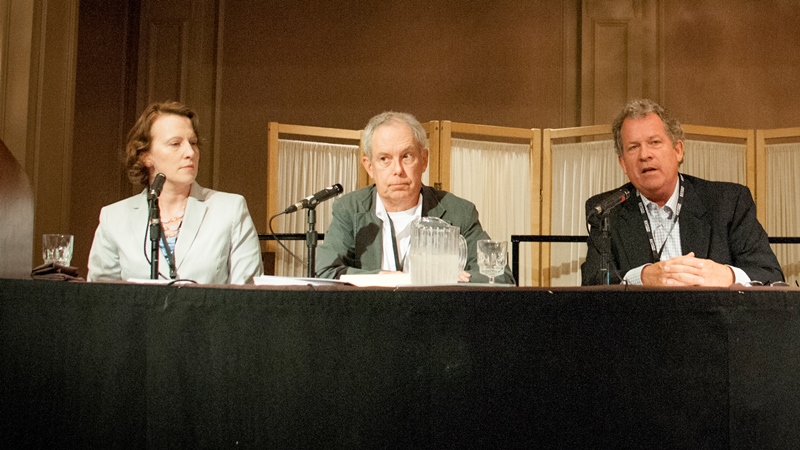NAREE Special Report: Healthy Communities for the 21st Century
A discussion on Wednesday at the National Association of Real Estate Editors (NAREE) Spring Conference in Houston highlighted why creating happy and healthy spaces can also help keep a cheery bottom line.
Mike Ratliff, Senior Associate Editor

L to R: Rachel MacCleery, ULI; Tim Bryant, St. Louis Post-Dispatch (moderator); James Vick, SWA Group.)
While developers have recently focused on creating a built environment that is healthy to our planet with energy efficiencies and sustainable building materials, the next generation of communities will also focus on the health of the end user.
A discussion on Wednesday at the National Association of Real Estate Editors (NAREE) Spring Conference in Houston highlighted why creating happy and healthy spaces can also help keep a cheery bottom line.
The reasoning behind a demand for healthier spaces is all too apparent. For the first time in history, American children might have a shorter lifespan than their parents, said Rachel MacCleery, senior vice president at ULI. We are in the middle of a health crisis where one third of the adult U.S. population is technically obese with a BMI of 30 or greater. Back in 1970 only one in eight adults would fall under the stigma. A large contributing factor is how we have built space.
“We have designed physical activity out of our lives,” said MacCleery, as a slide of an escalator leading up to a gym appeared on her presentation. “Rather than make health the easy choice, we make it the hard one.”
But according to ULI research, making health an easy choice is fairly simple and cost effective. The organization profiled 13 projects that put an emphasis on health in a report titled Building for Wellness: The Business Case. (We actually caught up with Anita Kramer, project director and author of the wellness report at ULI’s Spring meeting Vancouver.)
The big takeaway was that buildings with features like clean indoor air, social engagement and fitness elements elicit a strong response from the market with faster sales and lease ups.
“People want places that are good for them, and feel good to live in,” MacCleery added. “There is value to be gained by developers, the industry and the country as a whole.”
But it isn’t just buildings that can make a city a healthier place. Infrastructure plays a huge role, and James Vick, a principal of SWA Group, presented a case study that was taking place right in Houston with a bayou restoration program.
There are 12 bayous that connect the city, and had historically served in both recreation and transit. Over time, the bayous predominantly came to serve as a way to mitigate flood water. By the 1950s the majority of the system had been given concrete walls to improve its new function.
Today a program known as Bayou Greenways is taking a 1912 plan to use the bayou system as the ‘backbone of an equitable, accessible’ park system into fruition. The $215 milling public-private initiative is well underway to open 300 miles of space that will reconnect the city to its bayous.
“Sometimes it is no more of a cost than putting in a 10 foot-wide trail to invite people back to the bayou,” Vick said. “That’s all it takes to create a new set of experiences for the city.”
Houston locals are definitely embracing the plan, as Vick’s contractors are telling him that people are trying to use the paths before the concrete is even dry.
“There is just an inherent need for use to reconnect to the natural beauty of the bayou, and we really should have built this 100 years ago,” Vick concluded.







You must be logged in to post a comment.